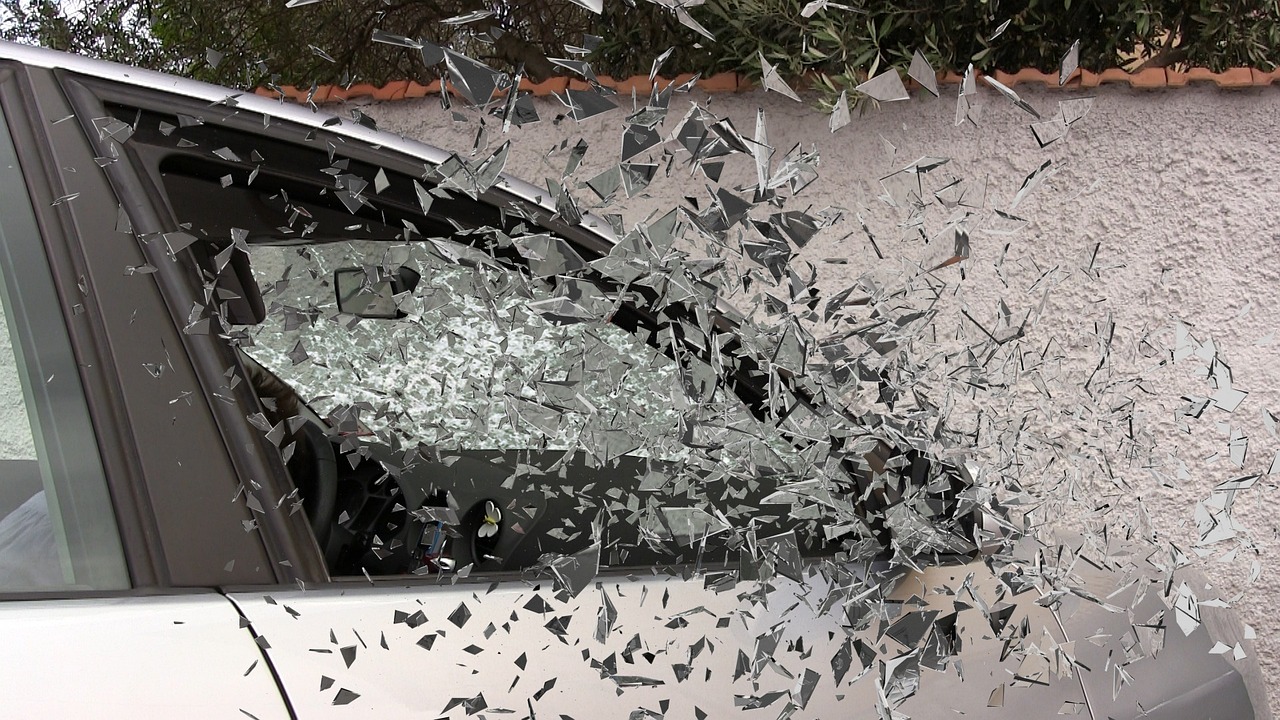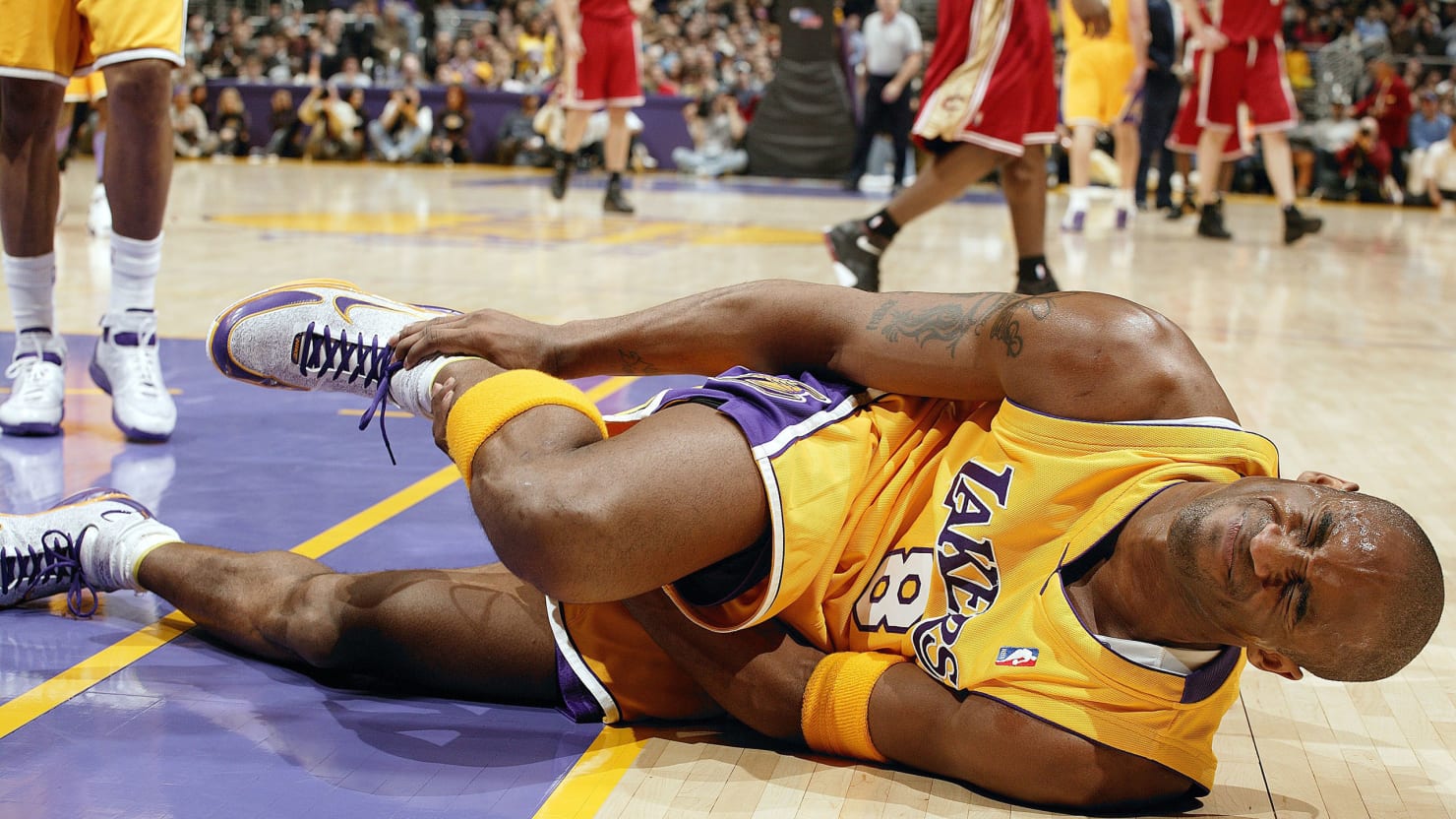In the wake of a wrongful death, navigating the complexities of legal proceedings can feel overwhelming. However, having the right legal representation by your side can make all the difference in seeking justice and closure for your loved one. In this blog post, we’ll delve into the crucial role that legal representation plays in wrongful death claims, highlighting the importance of compassionate guidance and expert advocacy in a friendly and approachable tone.
1. Understanding Your Rights:
Explore how a qualified wrongful death attorney can help you understand your legal rights and options, empowering you to make informed decisions every step of the way.
2. Navigating Complex Legal Procedures:
Learn how legal representation can guide you through the intricate legal procedures involved in filing a wrongful death claim, ensuring that your case is handled with care and diligence.
3. Expert Evaluation of Your Case:
Discover the value of having an experienced attorney evaluate the merits of your case, identifying key evidence and potential legal strategies to strengthen your claim.
4. Negotiating with Insurance Companies:
Understand the role of legal representation in negotiating with insurance companies on your behalf, advocating for fair compensation for your losses while protecting your rights.
5. Providing Emotional Support:
Recognize the compassionate support that a dedicated attorney can offer during this difficult time, providing a listening ear, empathetic guidance, and reassurance when you need it most.
6. Advocating for Justice and Accountability:
Explore how legal representation serves as a powerful advocate for justice and accountability, fighting tirelessly to hold responsible parties accountable for their actions.
7. Offering Peace of Mind:
Experience the peace of mind that comes with having a skilled attorney handle the legal aspects of your wrongful death claim, allowing you to focus on healing and honoring your loved one’s memory.
With the right legal representation by your side, you can navigate the complexities of wrongful death claims with confidence and peace of mind. Trust in the expertise and compassion of a dedicated attorney to guide you through this challenging journey toward justice and closure.
April Fools’ Day Pranks: Laugh Responsibly, Prioritize Safety
April Fools’ Day, a day synonymous with pranks and practical jokes, is eagerly anticipated by many each year. However, amidst the laughter and harmless fun, it’s essential to emphasize the importance of prioritizing safety, especially in the context of personal injury law. While it’s tempting to engage in elaborate pranks, one must always consider the potential risks and consequences to avoid any accidents or legal liabilities.
The Fine Line Between Fun and Liability:
In the realm of personal injury law, there exists a fine line between harmless pranks and actions that can result in serious injuries or legal repercussions. What may seem like a harmless joke to some could lead to physical harm, emotional distress, or property damage to others. It’s crucial to recognize this distinction and act responsibly when planning and executing April Fools’ Day pranks.
Legal Implications of Unsafe Pranks:
Engaging in reckless or unsafe pranks can have serious legal consequences. In the event that a prank results in injury or property damage, the perpetrator may be held liable for negligence. This could lead to legal action, including lawsuits and financial compensation for the injured party. Additionally, if a prank causes emotional distress or constitutes harassment, it may also result in legal ramifications.
Prioritizing Safety:
While April Fools’ Day is a time for laughter and lightheartedness, safety should always be the top priority. Before executing any prank, consider the potential risks and take steps to minimize them. Avoid pranks that involve physical harm, dangerous objects, or situations that could lead to accidents. Instead, opt for harmless jokes that bring joy without putting anyone at risk.
Tips for Safe Pranking:
Know your audience: Consider the sensibilities and preferences of the individuals involved before planning any pranks.
Avoid dangerous props: Refrain from using sharp objects, trip hazards, or anything that could potentially cause harm.
Respect boundaries: Ensure that your pranks are good-natured and won’t cause undue stress or anxiety to others.
Communicate openly: If you’re unsure whether a prank is appropriate, discuss it openly with the intended target beforehand.
Be prepared to apologize: If a prank goes awry or unintentionally causes harm, take responsibility, and apologize sincerely.
As we celebrate April Fools’ Day, let’s remember that laughter should never come at the expense of safety. By prioritizing the well-being of others and exercising caution in our pranking endeavors, we can ensure that everyone enjoys the holiday responsibly. Let’s keep the fun alive while also respecting the boundaries and safety of those around us. After all, a good laugh is only truly enjoyable when it’s shared without causing harm.
From Cycling Trips, to Nature Walks; Legal Advice for Outdoor Enthusiasts This Spring
With the arrival of weather and the call of nature outdoor lovers eagerly prepare for spring escapades. Whether it involves cycling along paths or trekking through forests these pursuits provide an ideal way to savor the season. Yet amid the anticipation it’s important to be mindful of aspects associated with outdoor endeavors. In this blog post we’ll delve into guidance for outdoor enthusiasts to ensure a safe and delightful springtime outing.
Know Your Rights and Duties
It’s vital to comprehend the laws and regulations governing pursuits in your locality. Familiarize yourself with trail protocols, road rules for cyclists and any necessary permits for activities.
Respect property rights and designated wilderness zones. Trespassing can result in repercussions. Mar the outdoor experience for others.
Liability and Injury Prevention
Make safety a priority by donning equipment like helmets for cycling and robust footwear for hiking.
Stay vigilant about dangers on trails or roads such as terrain, wildlife encounters and changing weather conditions. Taking precautions can help avert accidents and injuries.
When arranging group outings consider implementing liability waivers to delineate risks and responsibilities, for participants.
Exploring Premises Liability
When you visit parks, campgrounds or recreational spots it’s important to keep premises liability laws in mind. Property owners are responsible, for ensuring an environment for visitors.
If you notice any conditions like damaged structures or dangerous obstacles make sure to report them to the authorities to prevent accidents and avoid potential legal conflicts.
Documentation and Communication
If an accident occurs or someone gets injured make sure to document the incident thoroughly. Take photos of the scene. Gather contact details from witnesses.
It’s crucial to notify the authorities or property owners about any accidents. Quick communication can help resolve matters and ensure proper medical care if required.
Seeking Legal Advice if Needed
Should you sustain an injury due to negligence or hazardous situations during pursuits consider seeking advice from an injury attorney experienced in premises liability cases.
A legal expert can review the circumstances of your injury establish liability and provide guidance on your rights and options for pursuing compensation.
Conclusion
As outdoor enthusiasts gear up for spring adventures understanding aspects is key, for an enjoyable time. By knowing your rights and obligations putting safety first and being prepared for issues outdoor lovers can fully embrace spring activities while reducing risks and securing peace of mind.
Enjoy your time, on the trails. Have a hiking adventure!
Psychological Effects on Car Accident Victims
Car accidents are distressing events that can have lifelong emotional and psychological effects on those involved. While the physical injuries may heal, the mental scars can stay, affecting people’s daily lives and welfare. Understanding these effects and diagnosing the importance of seeking professional help is vital for recovery.
Signs of PTSD After a Car Accident
PTSD is a disorder that can progress after experiencing or seeing a traumatic event. Symptoms of PTSD following a car accident may include:
Re-experiencing the trauma
Avoidance
Negative changes in thinking and mood
Increased arousal and reactivity
Seeking Professional Help
Identifying the signs of PTSD and other mental health issues is the first step towards healing. It’s important for individuals affected by a car accident to seek professional help if they experience insistent psychological symptoms. Mental health professionals, such as psychologists and psychiatrists, can provide effective treatments for PTSD and other related conditions.
Treatment selections may include:
Cognitive Behavioral Therapy (CBT
Eye Movement Desensitization and Reprocessing (EMDR
Medication
In addition to professional treatment, support from family, friends, and support groups can play a critical role in the recovery process. Sharing experiences with others who have gone through similar situations can provide comfort and understanding.
The emotional and psychological aftermath of a car accident can be just as significant as the physical injuries. It’s important for survivors to acknowledge their feelings, understand that their reactions are normal, and decide when to seek professional help. Addressing the psychological impacts of car accidents can lead to better results and a healthier, tougher recovery.
Personal Injury Law Myth: Filing an Injury Claim will Lead me to a Huge Financial Bonanza
There is a misconception that filing an injury claim will lead to a huge financial windfall. Many people are influenced by the high-profile cases they hear about in public debates, or in the news. However, it’s important to note that most personal injury settlements are kept more private than what is reported in the media. Sadly, some people think filing a personal injury claim is a simple way to make quick money. However, these claims actually stem from incidents where people have been injured due to the negligence of others, such as, in car crashes, medical malpractice, or faulty product incidents. The purpose of injury claims is to provide compensation to those who have genuinely suffered losses because of someone’s carelesness. Victims of accidents often wish that the incident never happened or that they didn’t have to experience the loss of a loved one rather than focusing on receiving compensation through these claims.
Unfortunately, the exaggerated narrative we get from the media can give individuals hope of receiving millions from a lawsuit, even if their injuries are minor or if their case lacks evidences.
The settlement one can receive from an accident varies significantly. In reality, there is no specific figure for a personal injury settlement.
Several factors come into play when determining the value of a claim, such as:
The nature and severity of the injury
The type of accident that caused the injury
The extent and duration of treatment
Whether the injuries are permanent
Any contribution by the victim to the accident
The insurance coverage available
How the accident impacted the victim’s life
Typically, more severe injuries lead to higher potential settlement amounts. Permanent injuries often result in settlements compared to injuries, from accidents.
Texting While Walking: A Dangerous Habit with Legal Consequences
Explore the dangers and legal implications of texting while walking from a personal injury law perspective. Learn how distracted walking can lead to accidents, injuries, and complex liability issues.
In today’s fast-paced world, multitasking has become a way of life for many. Texting while walking, a common sight on city streets and pedestrian pathways, might seem like an efficient use of time. However, this seemingly harmless habit can have serious consequences, both physically and legally. From a personal injury law standpoint, understanding the dangers and legal implications of texting while walking is crucial for pedestrians and smartphone users alike.
The Risks of Distracted Walking
Texting while walking diverts attention from the surroundings, significantly increasing the risk of accidents and injuries. Pedestrians engrossed in their phones may not notice oncoming traffic, obstacles on the pathway, or other pedestrians, leading to collisions, falls, or more severe incidents.
Common Injuries Associated with Distracted Walking
Trips and Falls: Uneven surfaces, curbs, and street furniture can easily trip distracted walkers.
Collisions: Walking into objects, other pedestrians, or even moving vehicles can cause injuries ranging from minor bruises to serious head injuries.
Traffic Accidents: Pedestrians stepping into the road without noticing oncoming traffic are at a high risk of being struck by vehicles.
Legal Implications and Personal Injury Claims
In the context of personal injury law, texting while walking complicates liability and negligence issues in accident cases. Personal injury law primarily revolves around the concept of negligence, which refers to failing to act with the level of care that someone of ordinary prudence would have exercised under the same circumstances.
Determining Liability in Pedestrian Accidents
When an accident occurs involving a distracted pedestrian, determining liability involves assessing the negligence of all parties involved. If a pedestrian texting while walking is hit by a vehicle, the driver may be liable if they were speeding or otherwise acting negligently. However, the pedestrian’s actions can also be scrutinized for contributory negligence or comparative negligence, depending on the jurisdiction.
Contributory Negligence: In some areas, if the pedestrian’s distraction contributed to the accident, they might be barred from recovering damages.
Comparative Negligence: Many jurisdictions apply a comparative negligence approach, where the compensation the pedestrian can receive is reduced by a percentage equal to their fault in the accident.
Safety Tips to Avoid Distracted Walking Incidents
Keep Your Phone Away: Store your phone while walking, especially in areas with heavy pedestrian and vehicle traffic.
Be Aware of Your Surroundings: Regularly scan your environment for potential hazards.
Use Headphones Wisely: If you must listen to music or audio, keep one earbud out to stay aware of environmental sounds.
Cross with Care: Only cross streets at designated crosswalks and pay attention to traffic signals.
Frequently Asked Questions (FAQs)
Q1: Can I be held liable if I cause an accident while texting and walking?
A1: Yes, if your distraction contributed to the accident, you might be considered partially or fully at fault under the principles of contributory or comparative negligence.
Q2: What should I do if I’m injured by a distracted pedestrian?
A2: Seek medical attention, document the incident and your injuries, and consult with a personal injury attorney to understand your legal options.
Q3: How can pedestrians protect themselves legally?
A3: Be mindful of your surroundings, adhere to traffic laws and pedestrian signals, and avoid engaging in distractions like texting while walking.
Q4: Are there laws specifically addressing texting while walking?
A4: While not widespread, some jurisdictions have enacted ordinances that fine pedestrians for texting while crossing streets. It’s important to be aware of local laws.
Q5: Can I still recover damages if I was texting while walking and got hit by a car?
A5: Depending on local laws and the specifics of the case, you may recover damages, but your compensation might be reduced if you’re found to have been distracted.
Texting while walking is a modern-day hazard that poses significant risks not only to physical safety but also in the realm of personal injury law. By understanding these risks and taking proactive steps to mitigate them, pedestrians can protect themselves from harm and legal complications. Always prioritize safety and awareness over the convenience of multitasking on the go.
Don’t Miss the Game: Understanding the Clock on Sports Injury Claims
Hey there, fellow sports enthusiasts! We’re diving into a topic that might not be as thrilling as a buzzer-beater shot or a game-winning goal, but trust me, it’s just as crucial. We’re talking about the statute of limitations for sports injury claims, and why timing is absolutely critical in this game.
Picture this: You’re out on the field, giving it your all, when suddenly, bam! You’re sidelined by an injury. It’s frustrating, it’s painful, and it might even be someone else’s fault. That’s where the legal game comes into play.
Now, here’s the thing about sports injury claims: they’re like a ticking time bomb. Every state has its own set of rules about how long you have to file a claim after getting injured. Miss that window, and you might as well be sitting on the bench for good.
So, why does timing matter so much? Well, think of it like this: memories fade, evidence disappears, and witnesses scatter like leaves in the wind. The longer you wait to file a claim, the harder it becomes to prove your case. It’s like trying to make a comeback when you’re down by twenty points with only a minute left on the clock – not impossible, but definitely not ideal.
Now, I know what you’re thinking: “But I’m tough! I can tough it out and deal with the legal stuff later.” Trust me, I get it. You’re a fighter, a competitor, and you don’t want anything to slow you down. But here’s the reality check: waiting too long to file a claim could cost you big time. You could miss out on compensation for medical bills, lost wages, and pain and suffering – all because you didn’t play by the rules.
So, what’s the game plan? Simple: know your state’s statute of limitations for sports injury claims, and act fast. Don’t wait until the final buzzer to make your move. Talk to a legal pro, gather your evidence, and get the ball rolling as soon as possible.
Remember, in the game of sports injury claims, timing is everything. Don’t let the clock run out on your chance for justice. Get in the game, and play to win.
When Gear Goes Haywire: Holding Manufacturers Accountable for Sports Injuries
Hey folks, today we’re talking about a not-so-fun aspect of sports: equipment failure. Yep, it’s that moment when your gear decides to betray you and sends you tumbling. But fear not, because we’re also diving into how you can hold the manufacturers accountable when things go south.
Imagine this: you’re out on the court, giving it your all, when suddenly, your shoe falls apart like it’s made of paper. Or maybe you’re tearing down the field, ready to score, when your helmet decides it’s time for a break. It’s not just frustrating – it’s downright dangerous.
Now, here’s the deal with equipment failure: it happens. No piece of gear is invincible, and wear and tear are part of the game. But when your equipment fails due to a manufacturing defect or negligence, that’s a whole different story.
So, who’s to blame when your gear lets you down? Cue the manufacturers. These folks are responsible for making sure their products are safe and up to standard. When they cut corners or overlook flaws in the design or production process, they’re putting you at risk.
But here’s where it gets tricky: holding manufacturers accountable ain’t always easy. You’ll need to gather evidence, prove that the equipment was defective or improperly made, and show how it directly caused your injury. It’s like building a case for the defense, only you’re the one calling the shots.
So, what can you do if you find yourself on the wrong end of a faulty piece of gear? First off, don’t panic. Take photos of the equipment, gather any witnesses, and seek medical attention if needed. Then, reach out to a legal expert who knows their stuff when it comes to product liability.
Remember, you’re not alone in this. Manufacturers have a responsibility to keep you safe, and when they drop the ball, they need to be held accountable. So strap on that gear, play hard – but if your equipment lets you down, don’t hesitate to fight back. After all, it’s your safety on the line.
Making Smart Choices: What to Do with Your Personal Injury Settlement Money
Receiving a personal injury settlement is a significant milestone that can bring both relief and uncertainty. Whether you’ve reached an agreement through negotiation or won a case in court, the question of what to do with your settlement money is a crucial one. Making wise decisions can have a lasting impact on your financial well-being and overall quality of life. In this article, we’ll explore some thoughtful ways to manage your personal injury settlement money to ensure a secure and fulfilling future.
Clear Outstanding Debts:
The first step after receiving your settlement should be to clear any outstanding debts. This includes medical bills, legal fees, or any other debts that may have accumulated during the course of your injury. By settling these obligations, you’ll create a clean slate and set the stage for a more stable financial future.
Establish an Emergency Fund:
Life is unpredictable, and unexpected expenses can arise at any time. Establishing an emergency fund with a portion of your settlement can provide a financial safety net. Aim to save three to six months’ worth of living expenses in a readily accessible account, ensuring you have a cushion to fall back on in case of unforeseen circumstances.
Invest in Your Health:
Consider allocating a portion of your settlement money to invest in your health and well-being. This could involve ongoing medical treatments, rehabilitation, or therapies that contribute to your physical and mental recovery. Prioritize your health to enhance your overall quality of life.
Long-Term Investments:
Think about your long-term financial goals and consider investing a portion of your settlement money wisely. Consult with a financial advisor to explore options such as stocks, bonds, or real estate that align with your risk tolerance and financial objectives. Diversifying your investments can help secure your financial future.
Education and Career Development:
Investing in your education or career development can be a strategic use of your settlement funds. Whether it’s pursuing further education, certifications, or vocational training, enhancing your skills can open doors to better career opportunities, ultimately leading to increased earning potential.
Create a Budget:
Developing a realistic budget is essential for managing your settlement money responsibly. Take into account your ongoing living expenses, set aside funds for savings and investments, and allocate a reasonable amount for discretionary spending. A well-thought-out budget will help you stay on track and avoid unnecessary financial stress.
Receiving a personal injury settlement provides an opportunity to rebuild and secure your financial future. By prioritizing debt repayment, establishing an emergency fund, investing wisely, and focusing on your health and personal development, you can make the most of your settlement money. Consulting with financial professionals can provide valuable guidance tailored to your unique situation, ensuring that your financial decisions align with your long-term goals.
Basketball and Stress Fractures: Recognizing, Treating, and Preventing
In the relentless pursuit of excellence on the basketball court, athletes often find themselves walking a fine line between pushing their limits and risking injury. Among the various challenges faced by basketball players, stress fractures stand out as a particularly formidable foe. In this exploration, we delve into the world of stress fractures in basketball, unraveling the intricacies of recognition, treatment, and, most importantly, prevention.
Understanding Stress Fractures:
Stress fractures, microscopic cracks in bones caused by repetitive stress, are common in high-impact sports like basketball. The constant pounding on hard surfaces, sudden stops, and explosive movements can lead to the gradual development of these tiny fissures. Often starting as subtle discomfort, stress fractures can escalate into debilitating injuries if not addressed promptly.
Recognizing the Signs:
The early signs of a stress fracture may be subtle, making awareness a crucial aspect of injury prevention. Basketball players should be vigilant for persistent localized pain, tenderness, or swelling, particularly during or after intense training sessions. Any alteration in the normal pattern of pain or discomfort should be viewed with a discerning eye.
Treatment Approaches:
When a stress fracture is suspected, seeking prompt medical attention is paramount. Diagnosis typically involves imaging studies like X-rays or MRIs to confirm the extent of the injury. Treatment strategies may include rest, immobilization with a brace or cast, and, in severe cases, surgical intervention. The key to successful recovery lies in early detection and a comprehensive rehabilitation plan.
Prevention Strategies:
Load Management:
Distribute training loads intelligently to prevent overloading specific bones. Implementing periods of reduced intensity or cross-training can help in maintaining overall fitness while giving the body a chance to recover.
Proper Nutrition:
Ensure a diet rich in calcium and vitamin D to support bone health. Adequate nutrition plays a pivotal role in preventing stress fractures by fortifying bone density.
Footwear Considerations:
Invest in basketball shoes with sufficient shock absorption and proper arch support. Ill-fitting or worn-out shoes can contribute to increased stress on the bones.
Surface Awareness:
Be mindful of the playing surface. Hard courts can contribute to the impact on bones. Alternating between different surfaces or using shoe inserts for shock absorption can be beneficial.
Listen to Your Body:
Pay attention to signals of fatigue or pain. Ignoring these warnings may lead to overuse injuries, including stress fractures. Allow for adequate rest and recovery.
Cross-Training:
Incorporate low-impact activities like swimming or cycling into your routine. This diversification helps reduce repetitive stress in specific areas.
In the high-stakes world of basketball, where every jump and pivot matter, understanding the nuances of stress fractures is a proactive step towards a long and successful career. Recognizing the signs, seeking timely treatment, and embracing preventative measures can be the game-changers that ensure players stay on the court, not sidelined by stress fractures but thriving with resilience and strength. After all, in the dance between passion and performance, prevention becomes the unseen partner, ensuring the rhythm of the game continues uninterrupted.
Reach out to Darfoor Law Firm at 1-833-DARFOOR to book a consultation. Our seasoned battalion stands ready to shepherd you through these trying times and champion your fight for the recompense you rightfully deserve.










